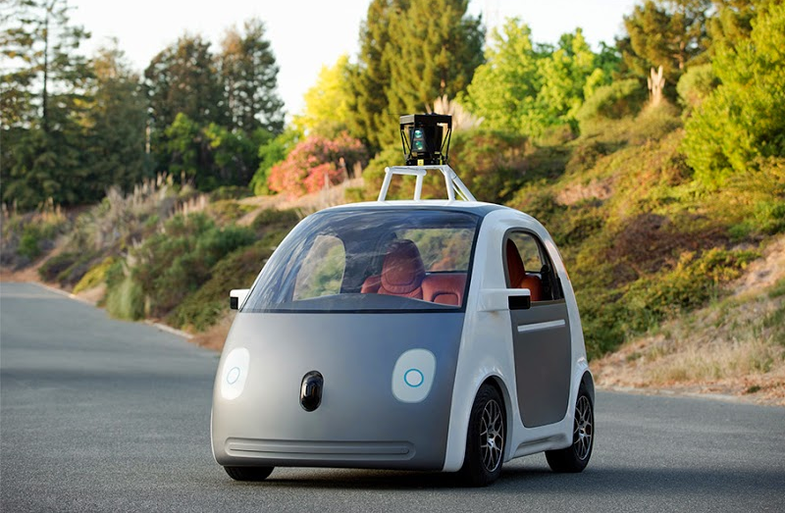Self-Driving Cars: A Marketer’s Dream?
The automated car of the future could become a haven for an advertising nightmare.

Picture this: You’re on a cross-country road trip with your kids, passing through some dusty corner of Nevada in your self-driving 2030 Chevrolet Lumina. Your car then sends an invisible message across the desert: Three passengers. Two in child seats. Sixth hour without a break. A distant server whirrs, combs through a database of your and your kids’ past online behavior, and beams a command back to your car. A grinning clown dances across your windshield and a familiar jingle plays. “McDonalds!” your kids squeal. Suddenly you have lunch plans.
As driverless cars become more and more commonplace, this scene soon could become a reality, according to Daniel Fagnant, who studies self-driving tech and its implications at the University of Utah. The technologies that enable autonomous navigation are expensive, and since people won’t be driving these vehicles, ads that help subsidize part of a car’s cost could play across their screens without distracting any drivers. Like any complex computer system, a self-driving car will be able to record all kinds of statistics about itself, including its route, location, and possibly even which passengers are inside. That information will be incredibly valuable to advertisers. And as more cars link up to the Internet and share data with one another, it could become difficult to control.
Researchers, policymakers, and automakers tell Popular Science that coming up with rules to govern how that data can be used is important. But there’s little to be said about the details. It seems obvious that your creepy neighbors shouldn’t be able to track your movements, but what about Mercedes-Benz? What about law enforcement—or Google?
“What all that means to me is in the absence of regulation, the tie goes to the manufacturer,” Fagnant says. Not everyone agrees with Fagnant’s dystopian vision. John Maddox, a researcher at the University of Michigan’s test space for connected and automated cars, says these concerns don’t reflect reality. “We’ve shown you can get truly anonymous data from vehicle-to-vehicle and vehicle-to-infrastructure networks,” he says.
He points out that many people are already sending tremendous amounts of data about themselves to companies not bound by any regulations. Many apps on smartphones, like Google Maps, collect data about your movements for companies that profit from ad revenue. In a world where huge industries already exist to track people for the sake of targeted advertising, the car may not seem like such a special case. But Fagnant says self-driving vehicles present a unique opportunity to advertisers.
“When you are in a car you are essentially captive,” he says, “If you are able to display in-vehicle ads then you are able to foist your advertising on consumers right at the point when they are close to markets.”
And in a car that can drive itself, you have no more urgent tasks—like, say, steering—to distract from that McTriple.